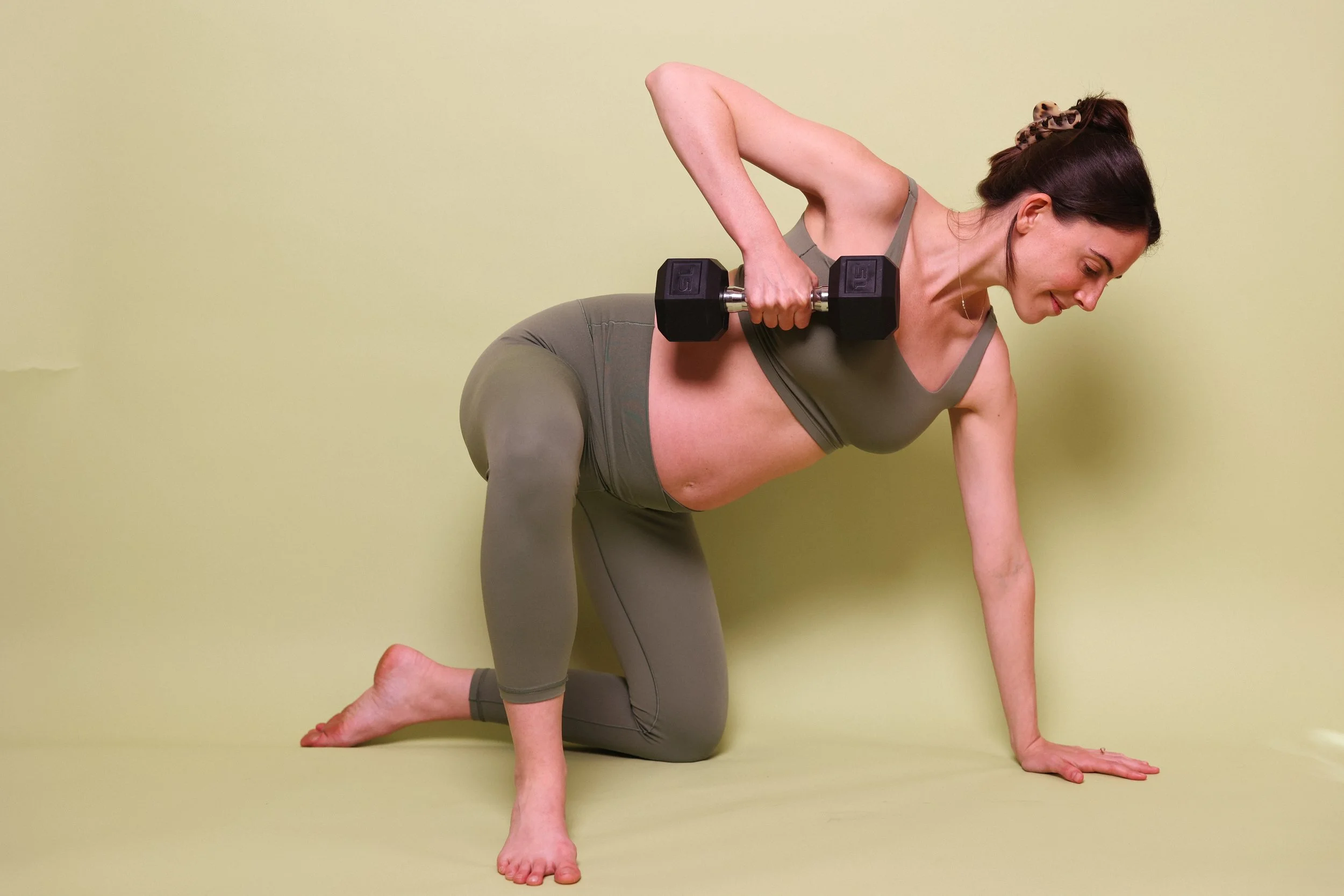The Best Movement Practices to Prepare for Birth (That Aren’t Kegels)
One of the first tips expecting mothers often hear from their care providers is to “start doing your Kegels.” While this advice comes from a good place, it’s vague, confusing, and misleading. The truth is, preparing for birth is so much more than learning to squeeze your pelvic floor.
If you’ve been wondering how to move safely and meaningfully through pregnancy — and how to actually prepare your pelvic floor for birth — this post is for you.
In this guide, I’ll walk you through the five most important movement practices that support your body for pregnancy, birth, and recovery. If you want to go deeper, I invite you to join my free Prenatal Foundations Week — a 5-class series designed to help you feel confident moving through your pregnancy by better understanding your body, how it will change, and how to safely adapt your movements to minimize discomfort and mitigate less desirable postpartum outcomes.
1. Understand Your Pelvic Floor (and Why It Needs to Relax)
Your pelvic floor is incredibly important during birth — but probably not in the way you’ve been told.
Kegels teach us to contract the pelvic floor, and yes, we want a strong pelvic floor to support us throughout pregnancy. But what most people don’t realize is that your ability to relax and release your pelvic floor is just as important — if not more so — when it comes to birth prep. Ultimately, the job of the pelvic floor in a vaginal birth is to get out of the way so your baby can make their way through.
A functional pelvic floor isn’t just strong — it’s responsive. It knows when to activate and when to let go. Over-recruiting or clenching your pelvic floor can actually cause more harm than good, potentially contributing to pelvic pain, incontinence, or complications during birth.
💡 Inside Class Two of my Prenatal Foundations Week, you’ll learn exactly what your pelvic floor is, how it works, and how to contract and relax it effectively.
2. Breathwork That Supports Birth (and Your Nervous System)
Breath is one of the most powerful tools you have during pregnancy and birth. When you breathe well, you’re not just sending oxygen to your baby — you’re supporting your posture, your pelvic floor, and your nervous system.
During pregnancy, we often lose mobility in the ribs and spine, which affects how deeply and efficiently we can breathe. Shallow breathing increases tension and can negatively impact your posture, comfort, and ability to relax.
That’s why we focus on 360-degree breathing — a functional breath pattern that dynamically contracts and relaxes the diaphragm, ribcage, and pelvic floor together, creating a calm, connected state.
💡 In Class One of Prenatal Foundations Week, we explore various positions and techniques to promote optimal breathing.
3. Build Strength Where It Matters (Including Your Core)
Building muscle during pregnancy is not just safe — it’s necessary. The more strength you build now (with the right foundation), the more supported you’ll feel during birth and postpartum.
Key areas to strengthen include:
Hips: Glutes, hamstrings, hip flexors, adductors, and stabilizers for pelvic alignment, stability, and balance.
Shoulders & Upper Back: To help with posture and prepare for the demands of carrying a newborn.
Core: Specifically the deep core (transverse abdominis, obliques, and multifidi), which stabilizes the pelvis and spine and supports your body through pregnancy and postpartum recovery.
💡 Classes Three & Four of the Prenatal Foundations Week show you how to properly brace your core both on and off the exercise mat.
4. Mobility That Makes Space (Literally)
Mobility work isn’t just about “stretching” — it’s about creating space in your body: for you to feel more at ease AND for your baby to have room to descend during labor.
Functional prenatal mobility targets:
Pelvis: Asymmetrical movement, internal rotation, and pelvic floor release help create space.
Ribs: Expanding rib mobility improves breath and alignment.
Thoracic Spine: Functional t-spine mobility reduces the need for the belly to compensate (which can lead to diastasis).
Chest & Shoulders: Reduces tension and counters the forward-pulling posture of pregnancy.
💡 Class Five of Prenatal Foundations Week connects all these elements, showing how they support both pregnancy and birth.
5. Prepare Mentally and Emotionally Through Movement
Movement isn’t just physical — it’s deeply connected to your mental and emotional wellbeing during pregnancy.
Breathwork, strength training, and mobility don’t just prepare your body — they help regulate your nervous system. These practices can:
Reduce anxiety
Improve body awareness
Foster a sense of control and calm
Build emotional resilience heading into labor and postpartum
This internal preparation is just as essential as the physical work.
Conclusion: Let Go of the Kegel-Only Mentality
There’s nothing wrong with doing Kegels — but birth prep is about so much more than pelvic floor squeezes.
It’s about learning to move with intention, building strength where you need it most, and developing tools that help you meet pregnancy, birth, and motherhood with confidence.
If you want a clear, calm, and expert-guided path to get started, take my Prenatal Foundations Week. It’s completely free and packed with value — a foundational starting point that meets you exactly where you are.



